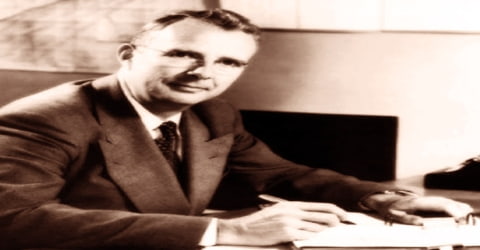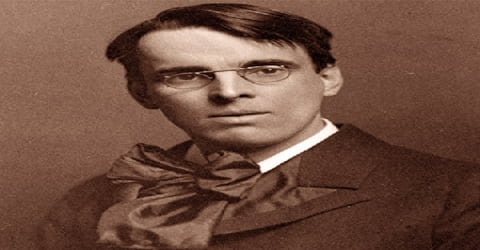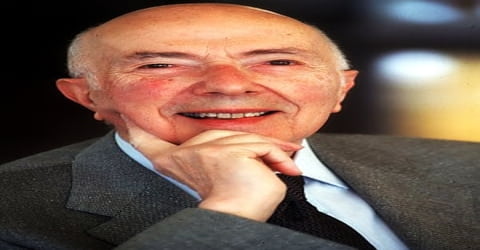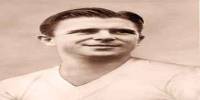Biography of Luis Walter Alvarez
Luis Walter Alvarez – American experimental physicist, inventor, and professor.
Name: Luis Walter Alvarez
Date of Birth: June 13, 1911
Place of Birth: San Francisco, California, United States
Date of Death: September 1, 1988 (aged 77)
Place of Death: Berkeley, California, United States
Occupation: Physicist, Professor
Father: Walter C. Alvarez
Mother: Harriet née Smyth
Spouse/Ex: Geraldine Smithwick (m. 1936-1957), Janet L. Landis (m. 1958-1988)
Children: Walter Alvarez, Jean Alvarez, Donald Alvarez, Helen Alvarez
Early Life
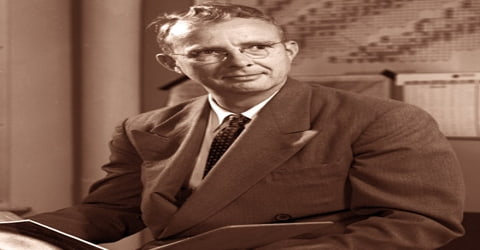
An American experimental physicist who was awarded the Nobel Prize for Physics in 1968 for work that included the discovery of many resonance particles, Luis Walter Alvarez was born in San Francisco, U.S. on June 13, 1911, the second child and oldest son of Walter C. Alvarez, a physician, and his wife Harriet née Smyth. Alvarez was probably most famous for the discovery of the iridium layer and his theory that the mass extinction of dinosaurs was caused by an asteroid or comet colliding with Earth. Besides doing the normal work you might expect of a physics professor, Alvarez took on more unusual projects, like making use of cosmic rays to search for hidden chambers in an Egyptian pyramid.
After receiving his Ph.D. from the University of Chicago in 1936, Alvarez went to work for Ernest Lawrence at the Radiation Laboratory at the University of California in Berkeley. Alvarez devised a set of experiments to observe K-electron capture in radioactive nuclei, predicted by the beta decay theory but never before observed. He produced tritium using the cyclotron and measured its lifetime. In collaboration with Felix Bloch, he measured the magnetic moment of the neutron.
His scientific inclination could be credited to his father and grandfather, as both of them were physicians. During his college days, he investigated the effect of cosmic rays. Alvarez then worked at the Radiation Laboratory where his long association with the University of Berkeley was formed. During this time, he also got engaged to his first wife Geraldine, whom he later divorced and married again. During World War II, Luis worked in MIT on microwave radar research. The next few years, he also participated in the development of an atomic bomb. His association with the Radiation Laboratory was once again established, after the war, as he worked on a hydrogen bubble chamber. His long-standing association with Physics was recognized by the Nobel Prize Committee. In his later years, he worked with his son Walter and developed the theory about the extinction of dinosaurs. Alvarez was a member of the JASON Defense Advisory Group, the Bohemian Club, and the Republican Party. Alvarez was the doctoral advisor of astrophysicist Richard Muller.
Childhood, Family and Educational Life
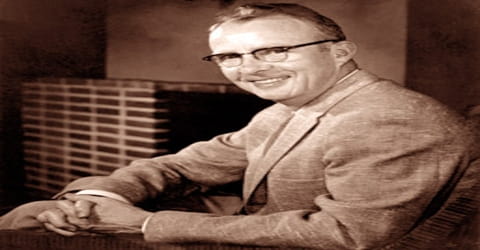
Luis Alvarez, in full Luis Walter Alvarez, also called Luis W. Alvarez, was born on 13th June in 1911, in San Francisco, California, the U.S. His father and grandfather were both physicians, and his grandfather lived a large portion of his life in Spain, Cuba, and in the United States. Alvarez was the second among his siblings and the oldest son of Walter C. Alvarez and Harriet. He had an elder sister named Gladys, a younger sister Bernice and a younger brother Bob. His aunt, Mabel Alvarez, was a California artist specializing in oil painting.
Alvarez attended Madison School in San Francisco from 1918 to 1924, and then San Francisco Polytechnic High School. In 1926, his father became a researcher at the Mayo Clinic, and the family moved to Rochester, Minnesota, where Alvarez attended Rochester High School. He had always expected to attend the University of California, but at the urging of his teachers at Rochester, he instead went to the University of Chicago, where he received his bachelor’s degree in 1932, his master’s degree in 1934, and his Ph.D. in 1936. As an undergraduate, he belonged to the Phi Gamma Delta fraternity. As a postgraduate, he moved to Gamma Alpha.
His first love was always Physics, and during his undergraduate years, in 1932 Alvarez experimented with machines, the outcome of which was Geiger counter, which helps in measuring radiation. He conducted an experiment to measure the effect of east-west cosmic rays in Mexico City. The findings of this experiment were published in ‘Physical Review’. Alvarez joined the faculty of the University of California, Berkeley, in 1936, becoming a professor of physics in 1945 and professor emeritus in 1978.
Personal Life
After he completed his oral exams in 1936, Luis Alvarez now engaged to be married to Geraldine Smithwick. Alvarez and Smithwick were married in one of the chapels at the University of Chicago and then headed for California. They had two children, Walter and Jean. They were divorced in 1957.
On 28th December 1958, this scientist got married to Janet L. Landis. From his second marriage, he had one more son, Donald and a daughter named Helen.
Luis Alvarez was a highly talented and highly imaginative experimental physicist. He had a particular talent for devising experiments that asked questions in such a way that Mother Nature felt compelled to give a good answer.
Career and Works
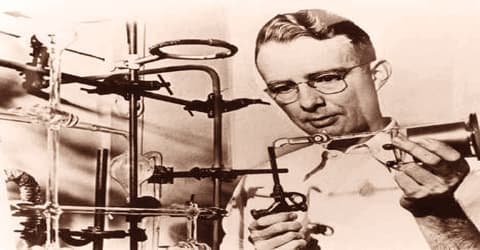
In 1936, Luis Alvarez joined ‘Radiation Laboratory’ in ‘University of California’. It was his sister Gladys who worked as a part-time secretary for Ernest Lawrence, one of the topmost nuclear physicists in the laboratory, who introduced her brother to Lawrence. Alvarez was supposed to look after the machine, cyclotron which helps in the study of atoms. An enthusiastic Luis himself made quite a few new discoveries about atoms.
In 1937 Alvarez devised a new experiment to ask Mother Nature whether the process really happened. He looked for the X-rays expected to be emitted by a nucleus when it captured an electron. The experiment worked and K-electron capture became an established phenomenon in physics. He published his results in the Physical Review in 1937.
In 1938 Alvarez discovered that some radioactive elements decay by orbital-electron capture; i.e., an orbital electron merges with its nucleus, producing an element with an atomic number smaller by one. In 1939 he and Felix Bloch made the first measurement of the magnetic moment of the neutron, a characteristic of the strength and direction of its magnetic field. Their result of μ0 = 1.93±0.02 μN, published in 1940, was a major advance over earlier work.
During the years 1940-43, Alvarez worked in MIT on microwave radar research. This radar system was built to guide airplanes through darkness or fog, a technique much needed in the onset of World War II. During the years 1945-46, he participated in one of the top secret projects of the government; the development of an atom bomb in ‘Los Alamos Scientific Laboratory’. However, Alvarez was devastated by the huge loss of lives and mass destruction caused by the atom bomb in Hiroshima; a fact that he later disclosed in a letter to his son. After his return to the ‘Radiation Laboratory’, he used his wartime knowledge and built a hydrogen bubble chamber.
After World War II Alvarez helped construct the first proton linear accelerator. In this accelerator, electric fields are set up as standing waves within a cylindrical metal “resonant cavity,” with drift tubes suspended along the central axis. The electric field is zero inside the drift tubes, and, if their lengths are properly chosen, the protons cross the gap between adjacent drift tubes when the direction of the field produces the acceleration and are shielded by the drift tubes when the field in the tank would decelerate them. The lengths of the drift tubes are proportional to the speeds of the particles that pass through them. In addition to this work, Alvarez also developed the liquid hydrogen bubble chamber in which subatomic particles and their reactions are detected.
Returning to the University of California as a full professor, Alvarez had many ideas about how to use his wartime radar knowledge to improve particle accelerators. Though some of these were to bear fruit, the “big idea” of this time would come from Edwin McMillan with his concept of phase stability which led to the synchrocyclotron. Refining and extending this concept, the Lawrence team would build the world’s then-largest proton accelerator, the Bevatron, which began operating in 1954. Though the Bevatron could produce copious amounts of interesting particles, particularly in secondary collisions, these complex interactions were hard to detect and analyze at the time. Seizing upon new development to visualize particle tracks, created by Donald Glaser and known as a bubble chamber, Alvarez realized the device was just what was needed, if only it could be made to function with liquid hydrogen. Hydrogen nuclei, which are protons, made the simplest and most desirable target for interactions with the particles produced by the Bevatron. He began a development program to build a series of small chambers and championed the device to Ernest Lawrence.
By 1956, a large chamber was in operation. In the late 1950s, this chamber was used to discover a variety of new particles and resonance states. Alvarez was awarded the 1968 Nobel Prize in Physics for the work he and his group carried out. His prize award was: “for his decisive contributions to elementary particle physics, in particular, the discovery of a large number of resonance states, made possible through his development of the technique of using hydrogen bubble chamber and data analysis.”
In 1964 Alvarez proposed what became known as the High Altitude Particle Physics Experiment (HAPPE), originally conceived as a large superconducting magnet carried to high altitude by a balloon in order to study extremely high-energy particle interactions. In time the focus of the experiment changed toward the study of cosmology and the role of both particles and radiation in the early universe. This work was a large effort, carrying detectors aloft with high-altitude balloon flights and high-flying U-2 aircraft, and an early precursor of the COBE satellite-born experiments on the cosmic background radiation (which resulted in the award of the 2006 Nobel Prize, shared by George Smoot and John Mather.)
In 1965, Alvarez combined his expertise in Physics with archaeology, when a US-Egyptian team was trying to discover the hidden chambers of Giza. This was the beginning of his work with his son Walter, a teacher of geology by profession. Alvarez continued his work in different areas of Physics and won the Nobel Prize in the year 1968.
In 1967, Alvarez had the ingenious idea that hidden chambers in Egypt’s pyramids could be revealed by making use of cosmic rays to take an X-ray type photo. He placed a cosmic ray detector in an existing chamber below in the Pyramid of Chephren the second largest of the Pyramids of Giza. The rate that cosmic rays arrived at the detector would reveal any spaces within the pyramid’s structure. Alvarez was able to study about one-fifth of the pyramid’s volume but found no new chambers.
During the 1970s, Luis Walter Alvarez was doing geologic research in central Italy. There he had located an outcrop on the walls of a gorge whose limestone layers included strata both above and below the Cretaceous-Paleogene boundary. Exactly at the boundary is a thin layer of clay. Walter told his father that the layer marked were the dinosaurs and much else became extinct and that nobody knew why, or what the clay was about it was a big mystery and he intended to solve it. Alvarez had access to the nuclear chemists at the Lawrence Berkeley Laboratory and was able to work with Frank Asaro and Helen Michel, who used the technique of neutron activation analysis.
In about 1980 Alvarez helped his son, the geologist Walter Alvarez, publicize Walter’s discovery of a worldwide layer of clay that has a high iridium content and which occupies rock strata at the geochronological boundary between the Mesozoic and Cenozoic eras (i.e., about 65.5 million years ago). They postulated that the iridium had been deposited following the impact on Earth of an asteroid or comet and that the catastrophic climatic effects of this massive impact caused the extinction of the dinosaurs. Though initially controversial, this widely publicized theory gradually gained support as the most plausible explanation of the abrupt demise of the dinosaurs.
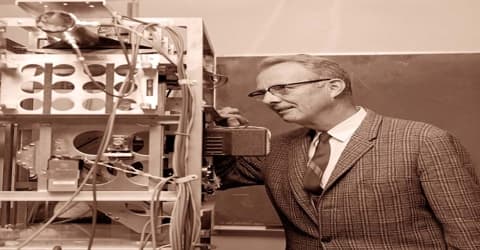
In his autobiography, Alvarez said, “I think of myself as having had two separate careers, one in science and one in aviation. I’ve found the two almost equally rewarding.” An important contributor to this was his enjoyment of flying. He learned to fly in 1933, later earning instrument and multi-engine ratings. Over the next 50 years, he accumulated over 1000 hours of flight time, most of it as a pilot in command. He said, “I found few activities as satisfying as being pilot in command with responsibility for my passengers’ lives.” Later in his career, Alvarez served on multiple high-level advisory committee’s related to civilian and military aviation. These included a Federal Aviation Administration task group on future air navigation and air traffic control systems, the President’s Science Advisory Committee Military Aircraft Panel, and a committee studying how the scientific community could help improve the United States’ capabilities for fighting a nonnuclear war.
Awards and Honor
In 1946, Luis Walter Alvarez was given the ‘Collier Trophy’ for the development of ‘Ground Control Approach’ by the ‘National Aeronautical Association’.
In 1953, Alvarez was given the ‘John Scott Medal and Prize’ for his research in ‘Ground Control Approach’.
Luis Alvarez was named as the “California Scientist of the Year” for his ground-breaking research work in Physics, in 1960. The following year, he was given the ‘Einstein Medal’ for his continued contribution in sciences.
In 1964, Alvarez received ‘National Medal of Science’ for his contribution in high-energy Physics. Alvarez was given the Michelson Award the following year.
This erudite physicist was honored with the prestigious ‘Nobel Prize in Physics’, in 1968.
Death and Legacy
This pioneering physicist, Luis Walter Alvarez died on September 1, 1988, due to complications from a succession of recent operations for cancer of the esophagus. He was cremated, and his ashes were scattered over Monterey Bay. His papers are in The Bancroft Library at the University of California, Berkeley.
The accomplished scientist has played a significant role in the advancement of physics but his contribution in the development of an atom bomb, and the liquid hydrogen bubble chamber which enabled discovery of new resonance states as seen in particle physics was the most profound. He was even awarded the Nobel Prize for his studies on particle physics.
Alvarez made numerous professional contributions to aviation. During World War II he led the development of multiple aviation-related technologies. Several of his projects are described above, including Ground Controlled Approach (GCA) for which he was awarded the Collier Trophy in 1945. He also held the basic patent for the radar transponder, for which he assigned rights to the U.S. government for $1. Alvarez’s aviation responsibilities led to many adventures. For example, while working on GCA he became the first civilian to fly a low approach with his view outside the cockpit obstructed. He also flew many military aircraft from the co-pilot’s seat, including a B-29 Superfortress and a Lockheed F-104 Starfighter. In addition, he survived a crash during World War II as a passenger in a Miles Master.
In 1990, two years after Luis Alvarez’s death, the Chicxulub crater in the sea off Mexico’s Yucatan Peninsula came to the attention of geologists, who agreed that the profile and age of the crater matched the Alvarez predictions. The meteorite impact itself is no longer a topic of debate. It is completely accepted that Alvarez’s team was right about this. Whether the mass extinction was caused mainly or exclusively by the impact is, however, still debated. There is an alternative theory that the extinction might have been assisted or even wholly caused by another catastrophic event, namely the enormously violent volcanic eruptions that took place in the Deccan Traps in India in the same geologic time frame as the meteorite impact. Someday, no doubt, the debate over the cause(s) of the mass extinction will be settled, but it hasn’t been yet!
Information Source:
